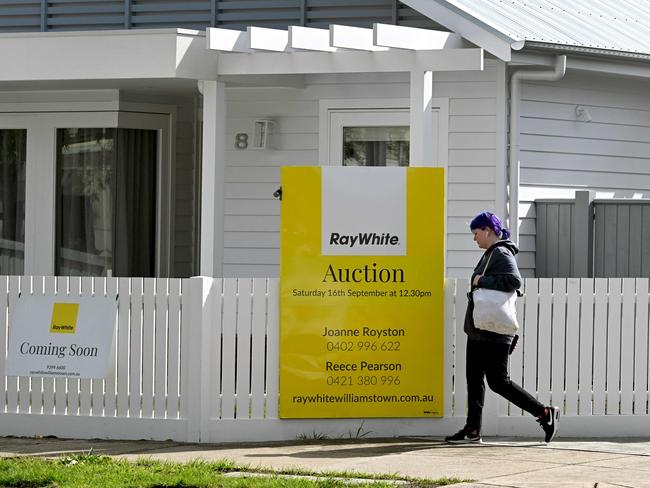When will interest rates in Australia fall?
As a quarter of the world’s central banks begin to cut interest rates, when is the RBA likely to do the same here?
Property
Don't miss out on the headlines from Property. Followed categories will be added to My News.
AUSTRALIAN property continues to defy historical trends, with home values still rising in most capital city and regional markets despite today’s high interest rates.
About a quarter of the world’s central banks have begun cutting interest rates, according to AMP, with Switzerland the first major economy to cut rates in March, followed by Sweden in May.
Earlier this month, the Bank of Canada and the European Central Bank cut their interest rates, while this week we saw the United States Federal Reserve keep rates on hold again.
WHEN WILL INTEREST RATES IN AUSTRALIA FALL?
Well, many analysts are tipping it will be no earlier than November. AMP chief economist Dr Shane Oliver predicts an 0.25 per cent cut in the cash rate from 4.35 per cent to 4.1 per cent in November or December, followed by two more 0.25 per cent cuts next year.

Major banks CBA, NAB and Westpac are also tipping November or thereabouts for the first cut, followed by one 0.25 per cent cut every quarter throughout 2025 until the cash rate reaches 3.1 per cent by Christmas next year. ANZ is forecasting the first cut to occur in February with two more by the year’s end.
In its last monetary policy statement, the Reserve Bank Board said returning inflation to the target band of 2 per cent to 3 per cent remained the highest priority, but momentum toward this goal had slowed.
Here’s what the RBA said: “The Board expects that it will be some time yet before inflation is sustainably in the target range and will remain vigilant to upside risks. The path of interest rates that will best ensure that inflation returns to target in a reasonable time frame remains uncertain and the Board is not ruling anything in or out.”
UNUSUAL HOME PRICE GROWTH
Despite the uncertainty on what will happen next with interest rates, the housing market remains strong and prices are rising in most capital cities and regions.
This is unusual by historical standards.
Typically, high or rising rates dampen property prices but that’s not occurring this time around. The key element keeping prices rising is a lack of supply.
The latest data from CoreLogic shows the national median home value rose for a 16th consecutive month in May, up 0.8 per cent – which was also the strongest monthly gain since October last year. Growth was strongest in Perth, up 2 per cent, and Adelaide, up 1.8 per cent. In both markets, stock levels are more than 40 per cent below their five-year averages for this time of year.
Brisbane home values rose by 1.4 per cent, which pushed the city past Canberra to become Australia’s second most valuable capital city market for the first time since 1997.
Once again, a lack of stock was a significant contributor to this monthly gain, with stock levels down 34 per cent on long-term averages. Conversely, home values fell 0.5 per cent in Hobart, which is currently a buyers’ market with stock levels more than 40 per cent above their long-term averages.
AUSSIE BORROWERS AREN’T STRUGGLING
Another stabilising factor for the market today is very low home loan arrears.
In the RBA’s most recent Financial Stability Review, published in March, the bank said less than 1 per cent of all home loans in Australia were 90 or more days in arrears. That’s actually less than the pre-Covid peak.
Borrowers are keeping up with repayments by using pandemic savings and reducing their discretionary spending. The jobs market is also very strong, so householders have been able to increase their hours or get a second job, if required.

The RBA says most borrowers should be able to continue paying their loans, even if inflation takes longer than expected to get to target, which means rates would stay higher for longer, too.
All in all, we have a very stable housing market today.
A lack of stock for sale and very low loan arrears means prices are likely to continue rising, no matter what happens next with interest rates.
* John McGrath is the founder, Managing Director and Chief Executive Officer of McGrath Estate Agents
More Coverage
Originally published as When will interest rates in Australia fall?




